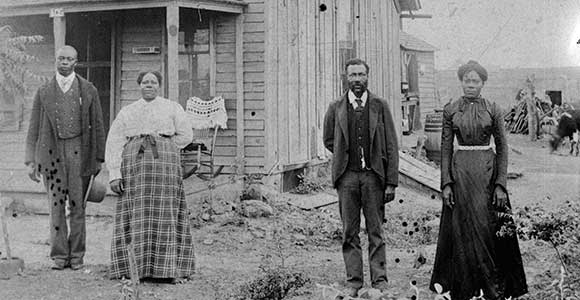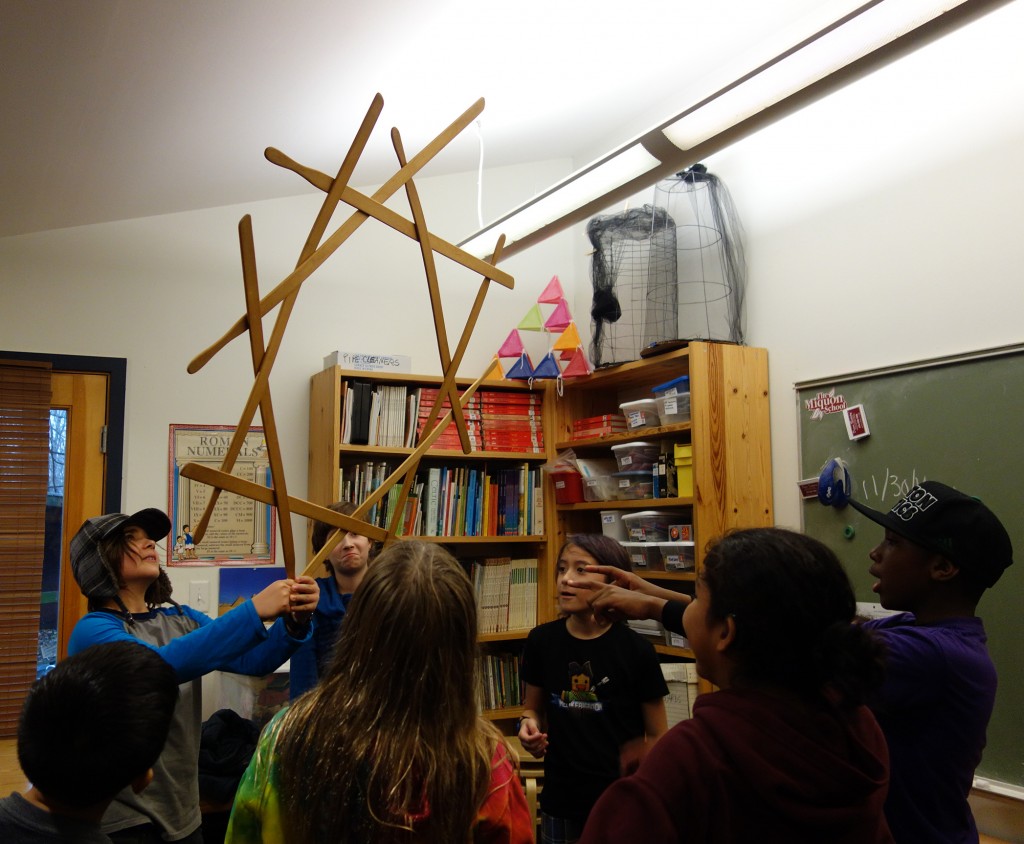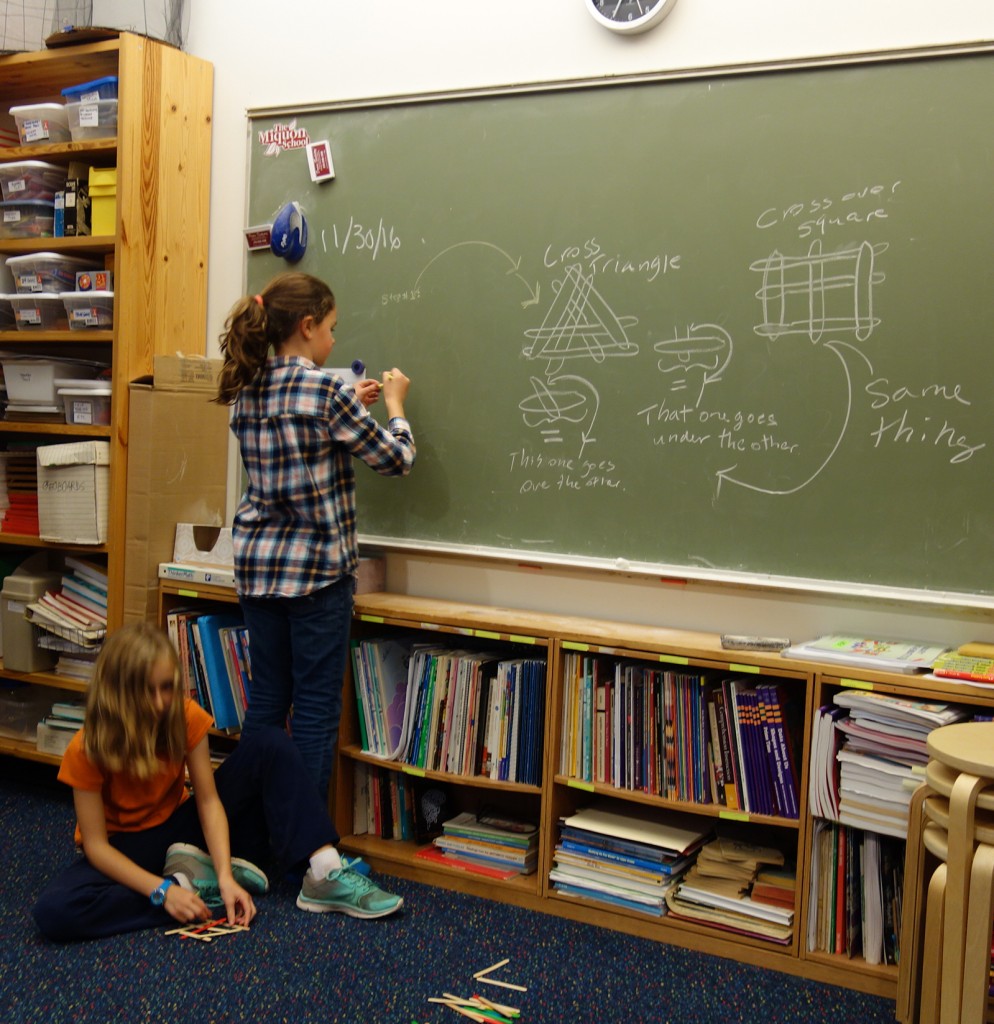As we approached our Winter Break — which marks the end of the first part of the school year — we also came to the end of our wagon train journey. There was a bit of anxiety on the final day as students heard about the amount of snow that had already fallen and considered the information from a friendly Native American they met who told them about the conditions in the highest sections of Snow Pass that they still needed to climb. Did they have enough rope to assist the animals as the trail became slippery and steep? Did they have snowshoes? Some did and some didn’t. It came down to a question of survival for the individual families. Some members of the train might make it to Hacker’s Valley, and some might not.
There were some other options. They could stay right where they were in High Valley and wait until spring. But it would be a rough winter — no shelters, no one to help but themselves, perhaps a shortage of food for themselves and their animals. Another choice would be to return to the town of Paradise for the winter. They could probably get through the pass behind them. They might find work, and the children could go to school. But that would leave a difficult part of the journey to do all over again, and other settlers who did get to Hacker’s Valley might occupy the best land. So the teams each had to make a choice.
They all opted for tackling Snow Pass. Each family’s fate would be determined by rolling a die in the hope of getting the number they had selected. The teams that were ahead of schedule (based on diary points as well as some wise decisions and good luck along the way) got more chances to roll, and there were extra chances given to those who had snowshoes and enough rope. The cries of delight that rang out as one child after another quickly got the desired number could probably be heard all the way to the office. Everyone made it! It was a wonderful outcome to a simulation with which they’ve been engaged since the start of school.
_________
Keeping in mind that our overarching theme for social studies this year is migration, we also took a brief look at another westward migration that happened in the post-Reconstruction period — the “Exodusters.” Mark took the lead with this study, which explored the story of the Great Migration of 1879 to Kansas. About 30,000 formerly-enslaved people, hoping to find safety and opportunity for a better life, made their way out of the South. Segregation, so-called Black Codes and Jim Crow laws, exploitation of black sharecroppers, and violence at the hands of resentful whites created a hostile environment that prevented those people from getting an education, finding proper work and housing, and exercising their civil rights (including voting).
Nicodemus is a Kansas town that was founded as part of that movement and is now a National Historic site. Students saw short videos, did some reading, and used primary sources to learn about this migration. It was a difficult and disappointing experience for many of the migrants, who had neither the money nor the knowledge to travel easily. The promise of settlement money and free land turned out to be a rumor instead of a fact. Some of what students learned was surprising and confusing, especially as it came on the heels of our recent election in November. In the post-war South, the Republicans were the anti-slavery party and the Southern Democrats were proponents of white supremacy. One student thought the Civil War was part of the Civil Rights movement of the mid-20th century. It can take a long time to build up a base of general history knowledge that is both wide enough and deep enough to drop in a new topic without needing a lot of background. We were able to provide some of that, but students will encounter much more in the coming years. Parents may also want to continue this discussion and exploration at home, as it has a lot of disturbing and tragic relevance in the present time as well.
_______
The Winter Assembly was great fun. After many practices that were made somewhat patchy by student school visits and the Dreaded Runny Nose Disease, we were able to do our Irish Mummers play not only for the school on Thursday at our dress rehearsal but also in the Friday assembly itself. (For an explanation of the history of this event, see our blog post for November 29.) Although we had no chance to practice in the church before we had to do it for an audience, our kids did a wonderful job of adapting to the space they had in which to work (“Room, room, me gallant boys, and give us room to rhyme!”). We made our traditionally-disruptive entrance at the start of Susannah’s welcoming speech (which she knew would happen) and everything went well. As Zivia raised the interlinked star made from 8 wooden swords, there was applause from the audience and an exhalation of relief from the dancers. Thanks to all of the parents who helped their children learn their lines and to the students who brought in an amazing collection of things to supplement our trunk of costumes and props. Kristin took lots of pictures, so you might want to take a look at them on the school website.
___________
We hope everyone has a joyful holiday time — whatever you are celebrating — and look forward to welcoming our kids back to school with a teacher-provided breakfast on Tuesday, January 3. We hope everyone remembers to work on their book project, as we will be completing and sharing presentations soon after our return.
Parents should watch their mailboxes for a newsletter that will come out before the end of the break, reviewing a bit of what we did with migration to this point and offering a preview of where we are headed with our very ambitious study of Ireland.




